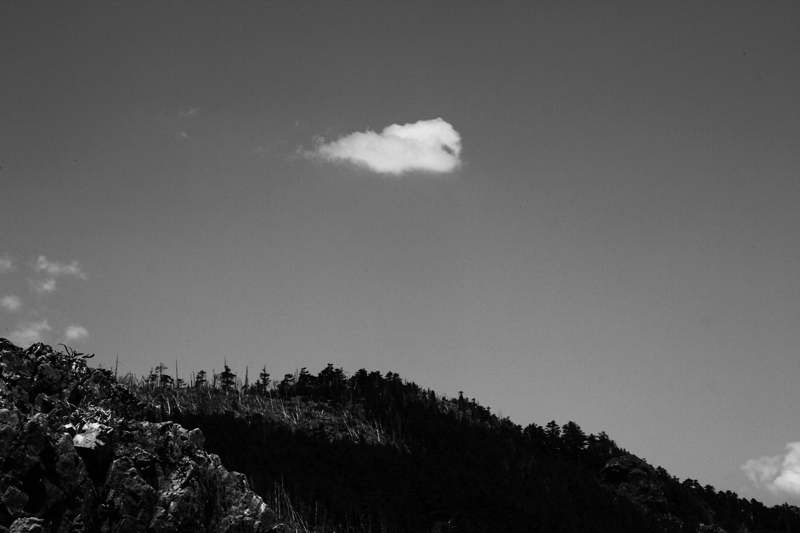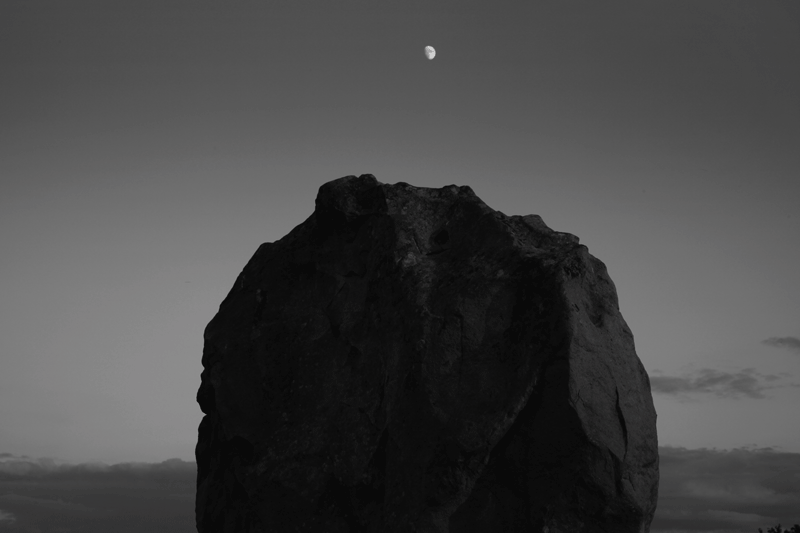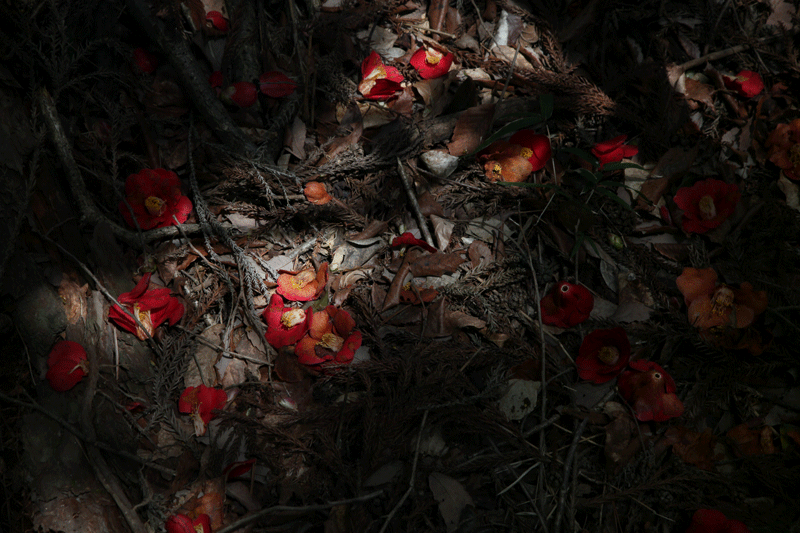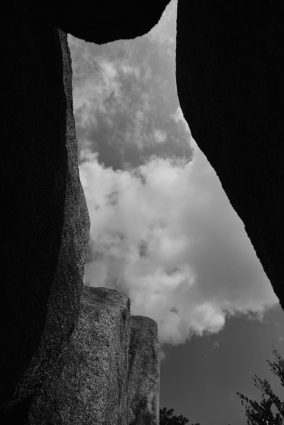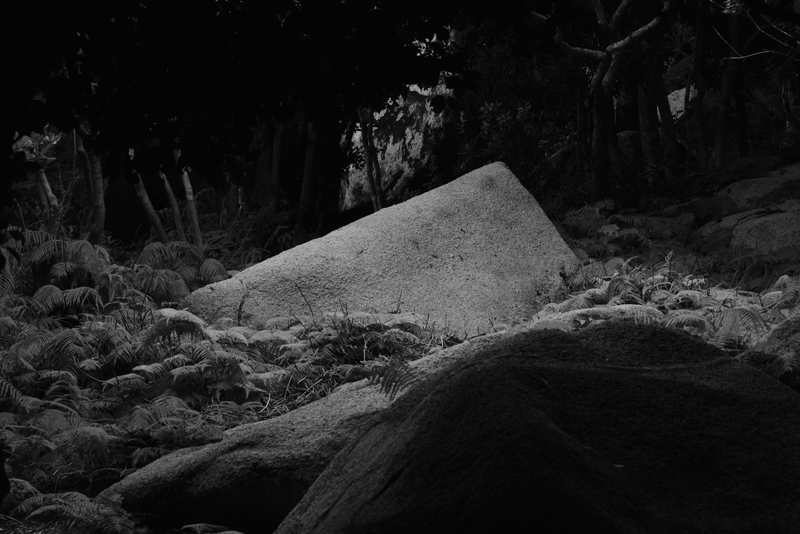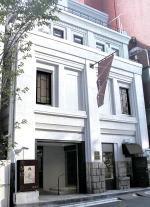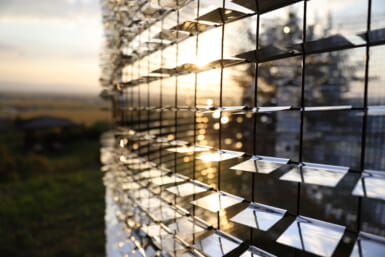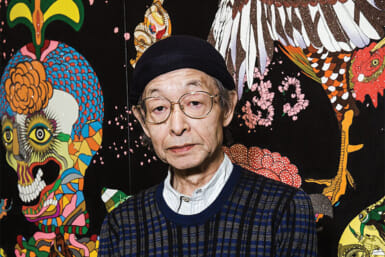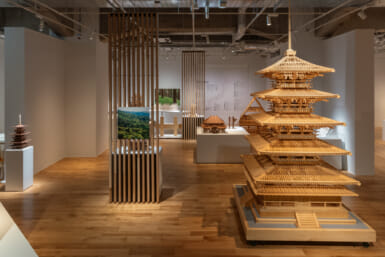Still inspired by his time with the Sherpas of Nepal, photographer Tomohiro Muda captures the language of the elements in his upcoming exhibit at Kashima Arts.
Best known for his work with the Sherpa people of the Himalayas, Tomohiro Muda is a renowned photographer who has been wowing audiences with his pictures for over three decades. From September 5th to the 20th, he will be displaying his latest photographic works at Kashima Arts in Kyobashi. Entitled “Chi-Ku no Bo” (Expressions of Earth and Sky), it is the second in a series of exhibitions depicting the “Cosmic Five Elements”: Chi (Earth), Sui (Water), Ka (Fire), Fuu (Wind) and Kuu (Sky).
“As I lined up some of my old photos I realized these elements featured prominently,” Muda tells Weekender. “I thought that it would be interesting to use this as a topic to display my collections; however, it seemed too broad to do in one exhibition. I decided to divide things up. A picture of a waterfall caught my eye so I started things off with water last year.
“While that was quite easy to do on its own, I felt earth and sky would be better put together as they are at opposite ends of the spectrum. Chi, the actual ground we live on, usually comes first on the list, while kuu, the universe, is always at the end. This separation fascinated me, providing all kinds of opportunities. With these pictures I got the sense that within this huge solar system I knew my place.”
The captivating shots, mostly black and white, are taken from a variety of locations around the world, including many in England and Ireland as well as Cape Ashizuri in Kochi. As with “Mizu no Bo” (“Portraits of Water”) the majority are photographs from years ago, but there are some more recent ones in there as well. Using a digital single lens reflex camera Muda says he “visits places randomly,” and starts shooting when he feels inspiration. Nothing is planned in advance.
“While I am walking, if I feel something then I’ll stop to take the picture,” says Muda. “I don’t have ideas in my head beforehand. Of course sometimes I go to various places and take nothing. Other times I get that sense of yuragi – like a spark or tremor. It’s not in my head: it just happens when I turn the camera and press the shutter without even realizing it.
“I believe it has to be instinctive. You can’t go out to take pictures in an emotional state thinking you will be moved by what’s around you. If you do that then the photos will probably be quite boring. The most interesting and remarkable images – whether they be religious buildings, rocks, the sky or water – are the ones produced intuitively.”
Muda has been taking photos since his late teens. Prior to that his main passion was painting. Going to art classes in the evenings while studying Sociology at Waseda University, he considered photography as an inferior skill to drawing. He then saw a picture of an 11-faced Kannon (a Buddhist deity) statue by renowned Japanese photographer Ken Domon at his friend’s apartment and was intrigued.
“I went to the library and started looking through his other books of photography and thought they were amazing,” he says. “After that I checked out other photographers, including Shomei Tomatsu, and it was like something just hit me. I was shocked. I realized that this was what I wanted to do. I rushed to join the photography club at Waseda, but for most people in the group it was just a hobby – not many were interested in doing it as a profession.
“I thought to myself, ‘Shohei Tomatsu is still alive, why don’t I ask if I can become his pupil?’ I went to see him, but he said he didn’t need a student or an assistant. ‘In order to take pictures you need to be alone,’ he told me. I asked him to at least have a look at my photos, but he turned me down. I eventually persuaded him to come to a university festival that was displaying some of my work. He spoke highly of what he saw and then invited me to his house to show him some more.”
Tomatsu advised Muda to go out and live with local people in Nepal, do what they did and from there great views would naturally follow, so that’s exactly what he did. While working as an assistant to a cameraman, he was introduced to a Nepalese boy who invited him to stay with his family high up in the Himalayas. He went to the mountains on three occasions, each time for around six months, spending his days with the ethnic group known as the Sherpas.
“I had a lot of difficulties there,” he says. “There was no electricity, gas, or water supply systems. I couldn’t have any meat or rice so I was only eating potatoes. I got hepatitis, dysentery and suffered from malnutrition. It had a terrible impact on my liver, so much so that for the past thirty years I have been going to the hospital for treatment.
“Yet having said all of that I would love to do it again. It was a real precious time in my life. Living with the Sherpas, joining all of the festivals – it was so much fun. They let me into their world and allowed me to take photographs which they don’t usually do because they don’t want their lives being exposed to foreigners.”
Three decades have passed since Muda first went out to spend time in the mountainous country of Nepal, but his appetite for photography remains as strong as ever. Listening to him speak about “Chi-Ku no Bo” (“Portraits of Earth and Sky”) you can feel his passion. This still means so much to him. In the future he may pass the baton on to his son who is now studying photography at college. So does he have any advice for
him or any other people looking to follow in his footsteps?
“I have never told my son anything about how to take pictures,” Muda says. “I just let him do it freely. I think it is best to do it the way you think and keep doing that. It may take time, but you will eventually figure out the style that is the best fit for you.”
About Kashima Arts
Kashima Arts is located in Kyobashi, just a short walk from either Tokyo Station or the Ginza area. The building dates back to 1927, while the interior reveals a mix of modern Japanese aesthetics alongside a very traditional tea room, where you can enjoy Japanese culture with the senses.
They are known for their high quality collections of traditional Japanese painting and calligraphy from the Edo period up to the present day, including works by the renowned artist Ito Jakuchu. Also, they recently have started showing works of contemporary artists that the owner carefully selects, based on his aesthetic sense sharpened in dealing with old Japanese paintings.
In order to help foreigners to better understand Japanese arts and culture, they have English speaking staff in the gallery as well as experts to explain about works in detail. A luxurious space that takes a twist on the typical museum experience, Kashima Arts offers something that is truly extraordinary.
When: Saturday, September 5–Sunday, September 20 (Open 10 am–6 pm)
Where: 3-3-2 Kyobashi, Chuo-ku, Tokyo 104-0031 (see map below)
Web: www.kashima-arts.co.jp/en/index.html
Tel: 03-3276-0700
Admission: Free
Sponsored Post

